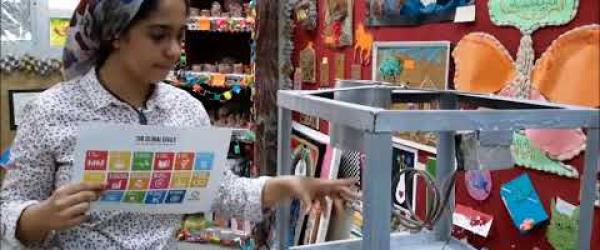ICT (Information and Communications Technology) tools are an important part of any mathematics and science focused school, such as PHA (Protea Heights Academy), however many other schools in South Africa, and in many other developing countries, are not as privileged, thus many scholars lack the necessary technological skills required for a rapidly developing global economy.
Solution:
Therefore, we decided to make an introductory tutorial using a very simple coding program/s that is perfect for beginners and is also fun/entertaining or people of ALL ages, including scratch, minecraft:education edition and codecombat (a personal favourite)
Link: https://www.youtube.com/watch?v=thbgMU5oo-U (SCRATCH)
Link:https://www.youtube.com/watch?v=3-fvY10GRlw (MINECRAFT: EDUCATION EDITION)/https://www.youtube.com/watch?v=SSimHPmZ0hA (MINECRAFT: EDUCATION EDITION)
Link:www.codecombat.com
We have also added a link of an extremely helpful and educational website that allows anyone to go through several courses of a variety of coding languages, in order to prepare you for application of that code, for free. Sololearn also includes challenges, chat groups, polls and ‘code playground’ to test your new coding skills.
Link:https://www.sololearn.com
Girls in STEM:
Firstly, what is STEM?
STEM stands for Science, Technology, Engineering and Math. It’s an acronym that was coined to address the current and future shortage of skilled workers in high-tech fields, and the inadequate education of students in these areas. It’s believed that, by teaching these subjects together, in an interdisciplinary cohesive approach, STEM education will be more relevant and fun (and thus attract more students), and will develop the sort of critical thinking skills needed in the high-tech workforce, both now and in the future.
What about women in STEM?
The shortage of skilled workers and students in STEM is only half of the story. More alarming is the shortage of female skilled workers and students in STEM. Stats vary by country and by discipline, but generally speaking, women make up only 15-25% of the current STEM workforce, and the gap is broadening.
Why does this matter?
-
Well, firstly there’s no evidence that girls are less capable in these fields, but rather that they often ‘feel’ less capable, partly due to stereotyping.
-
Then there’s the tendency for STEM jobs to be higher paid, meaning that the lack of women in these roles is contributing to gender salary gap.
-
A lack of women in these fields means fewer female role models, both for current female STEM employees, and for girls still forming career choices.
-
And what about the whole growth of STEM jobs in the future thing, which is expected to skyrocket…
There’s a lot of work going on behind the scenes by policy makers and educators to remove barriers and encourage women to work and study in STEM fields – which is awesome, but we think it needs to start earlier than that. Much earlier than that.
Why is STEM for young girls important?
Did you know that research has shown that science achievement gaps emerge by kindergarten , and these gaps continue until at least the end of eighth grade?
So, if kids don’t get enough exposure to science concepts and informal learning opportunities in preschool or earlier, then they’ll be starting kindergarten with relatively less knowledge about the physical and natural sciences. And this gap will likely haunt them for the next nine years or more.
Now if we look at STEM for young girls in particular, what’s alarming is that even where there is no difference in STEM ability, a large divide in ‘perceived competence’ for girls can start as early as age five. (This article on the way society treats boys and girls differently, and how boys and girls view themselves even when STEM abilities are equal, is very interesting.)
If you add in the lack of female role-models in the STEM workforce (both in real life, and in the media), the distressing stereotyping and dumbing-down of many ‘girl’ toys, and the often subtle (and not so subtle) marketing of STEM concepts to boys…
See where we are going with this?
We all concurred with Tom MacInnes when he said“I am loathe to allow gender distinctions to limit intellectual and personal freedom. I want my daughters to grow up knowing that they have the right to chart their own course when it comes to pursuing their interests and dreams.”
We are not trying to dictate which career direction all females must end up taking. We just want them to follow their dreams and to know that they have the right to pursue ANY dream that they want
How to encourage girls in STEM
Ok, so hopefully we have got you a little ramped up about the importance of encouraging girls in STEM, from a young age.
You might be wondering – how exactly do I do that?
It will differ for each child and each situation, but here are some general tips:
-
Surround your kids with positive female role-models
The old adage is that you can’t become what you can’t see. Take your kids to female doctors and dentists. Find out if any of the mums at school work in STEM, and then point this out to your child. Seek out books and movies that feature strong female STEM characters. If you’re a mum or female teacher reading this, don’t forget that you can be a positive female role-model too. Next time you need to drill a hole in the wall, do it yourself, and let the kids catch you doing it.
2. Help them find the answers to their questions
Science is all around us, and preschoolers are great at asking science questions. Sometimes they can ask dozens! Try (your hardest) not to dismiss their questions, and instead help them to
3. Watch your words
Research shows that people tend to speak more often in terms of numbers, quantities and science attributes to boys than girls, from as young as babies and toddlers. So make a conscious effort not to dumb down your conversations with your daughters. Speak less of what girls look like, and speak more of what they are interested in.
4. Follow their interests
Kids can often become ultra-fascinated with a particular topic, and that’s really cool! Encourage them to go down that proverbial rabbit hole, and learn as much as they want to about the subject. Borrow books, consult subject matter experts, do fun activities at home. It doesn’t really matter what the actual topic is, it’s more about encouraging their desire to learn, and learn deep! (But at the same time, if kids decide they aren’t interested anymore, let them move on to the next topic. That’s cool too. Let their interests be the guide.)
5. Provide ‘some’ construction and science kits
It’s also handy for kids to learn how to follow instructions and build something really cool. That’s where kits come in handy. My only caveat is that this should be in addition to, instead of a replacement of, more open-ended construction play.
There are a few really awesome kits out there that are gender-neutral, or marketed towards girls, and we are a big fan of these companies! Unfortunately (and frustratingly) many of the cool kits are still heavily marketed towards boys – but don’t let this persuade you. At first, if your kids are sensitive to the marketing, you could rebox the kits into a plain cardboard box. After a while, as their confidence grows, you can start to present the kits in their original packaging, and talk about why companies might package toys in this way, and the effects this has on society etc. You might even fire up a new advocate for the gender-neutral marketing of toys movement!
6. Follow the Scientific Method and view failures as discoveries
In science, finding out that something doesn’t work is just as important as finding out that something does. Persist. Tweak your hypothesis, adjust your experiment, and see if you can come up with a way to make it work.
7. Encourage a growth mindset
We’re firm believers in our house that if you say you can’t do something, then you’re missing the word ‘yet’. If you want to be good at something, then you need to practice. At first practicing can be hard and frustrating, but if you keep trying, then you can develop the skills to be able to do it more easily, which in turn makes practice more fun. Praise effort over results, because yes, they may need to do some hard yards first.
8. Use big words in context
Kids are masters of decoding. If you regularly use big words correctly and in context, they’ll quickly work out what they mean and they’ll become part of their everyday vocabulary. If preschoolers can pronounce ‘Tyrannosaurus Rex’ then they can certainly pronounce ‘dehydrated’, ‘asteroid’ and ‘nocturnal’.
If we all work hard we can make STEM fields more available, not only to girls, but or any/all genders.
More reading on STEM for girls:
Video Link: https://www.youtube.com/watch?v=ga4Gh36dnfU
 This video clip is a synthesis of the discussions thus far...
This video clip is a synthesis of the discussions thus far...

















































